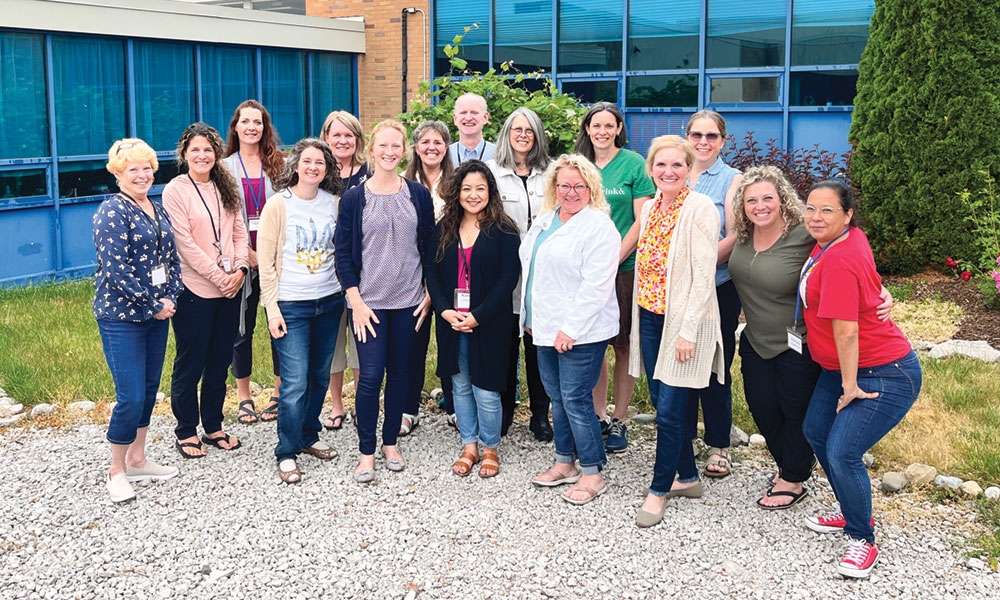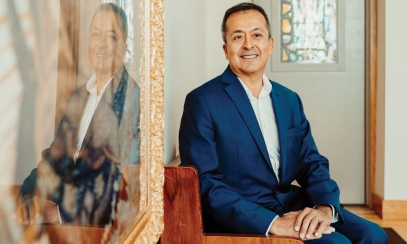
Led by the Holy Spirit
There’s something special about a child’s relationship with Jesus. As adults work to form young learners in the faith, their approaches evolve, led by the Good Shepherd himself. Here’s how.
There’s something special about a child’s relationship with Jesus. As adults work to form young learners in the faith, their approaches evolve, led by the Good Shepherd himself. Here’s how.
The year is 1954. A meeting of great magnitude is taking place between two women in Rome, both of whom have been working to educate young children. And the work they will do together will be truly transformational.
After they begin talking to each other, theologian and biblical scholar Sofia Cavalletti and Montessori educator Gianna Gobbi will go on to develop a groundbreaking method of spiritual formation: the Catechesis of the Good Shepherd (CGS).
Now, more than a half century later, CGS is alive and well in the Diocese of Lansing, where it receives diocesan financial support through the DSA and is being celebrated, taught and shared by practitioners like Hannah Turchi, who serves as director of religious education at St. Robert Bellarmine Catholic School in Flushing.
“I first learned about CGS when I was in college at Eastern Michigan University,” Hannah remembers. “My mom was helping set the new program up at our home parish, and our furniture kept disappearing from the house. When I asked, she told me these things were in a new place called the ‘atrium.’”
Ultimately, Hannah went to visit this atrium in person.
“It was one of the most peaceful places I've ever been,” she says. “Everything was just beautifully made for a child that was three to six years old.”
After graduation, Hannah decided to be trained in CGS along with other members of her family. At that point, she fell in love with the way the program worked.
“It connected the things I believed in my mind with the knowledge I held in my heart,” she says. “It changed my life completely. I came home to work as director of religious education, serving in the atrium, and at the same time earned my master’s in CGS, which is offered at the Aquinas Institute of Theology in St. Louis.”
CSG is based on the relationship between the child, the Holy Spirit, the atrium environment, and the caring adults who work there. Using Scripture and the liturgy as a primary foundation, CSG educates students from ages three to twelve.
“One of the first things we do is introduce children to the model altar, so they know it,” Hannah says. “It's a tiny little altar that includes all the articles, so they can understand and participate in the liturgy with understanding. When we read from the Bible, we read actual Scripture from a real Bible, not a kids’ Bible. Young people love reality, and we ensure they have space and time to contemplate it as they grow.”
The children receiving CGS instruction are enthusiastic about the experience.
“When they walk into the space, they know it's a space that has been built for them,” Hannah says. “And so, it's a place of prayer that is at once very communal, but also private. They absolutely soak it all in. And because of the approach, they're very deep with their thoughts and questions.”
Today, Hannah and her mother offer CGS training to other adults interested in offering the program in their parishes and schools. These trainings are made possible through support from the DSA.
“It's like wildfire right now, which is very cool to see,” Hannah reports. “It's expanding at a pretty rapid rate in our diocese, and it has been growing in the dioceses of Detroit and Saginaw, as well.”
But for Hannah, the growth that matters most is that of each individual child.
“Abraham Heschel wrote, ‘Life without wonder is not worth living,’” she says. “I think that working with children in this way really opens my own heart to wonder and awe. As they grow, they’re helping me grow, too — there’s always more to ponder.”



